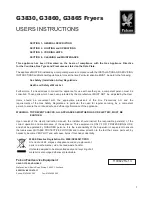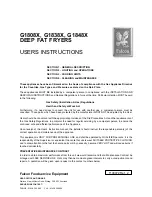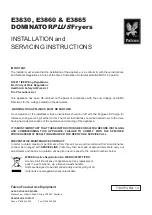
10
THE PRESENT MANUAL IS PROPERTY OF THE MANUFACTURER. ANY REPRODUCTION, EVEN PARTIAL, IS PROHIBITED.
- 10 -
INSTRUCTIONS FOR USE
5.
10
THE PRESENT MANUAL IS PROPERTY OF THE MANUFACTURER. ANY REPRODUCTION, EVEN PARTIAL, IS PROHIBITED.
- 10 -
3.
Starting production
Before proceeding with these operations, see "Daily
activation".
When loading the product into the appliance and
unloading it, there is a residual risk of being burnt; this
risk can occur coming into unintentional contact with:
hob - cooking compartment - recipients or material
processed.
Take appropriate measures for personal protection.
Wear protective equipment suitable for the operations
to be performed.
Start the appliance only after having filled the cooking
compartment with oil/grease at the proper level. Any
other use is considered improper and therefore
dangerous.
Too much oil/grease inside the cooking compartment
can cause it to spill over and the residual risk of being
burnt remains. While filling, respect the Min and Max
level carried in the cooking compartment.
If there is no oil inside the cooking compartment
while the appliance is on, there is the residual risk
of fire. While operating, the oil/grease level inside
the cooking compartment must remain within the
indicated limits.
Do not cover the cooking compartment or pour salt or
seasoning inside of it while it is on.
Loading Oil/Grease in cooking compartment
The appliance can have one or two gate valves. Open the door
and make sure the oil/grease drain gate valve is at “Closed” (Fig.
1).
Pour the product used for cooking (oil or grease) into the cooking
compartment, respecting the minimum/maximum level shown
inside of it (Fig. 2).
The level of the oil increases approximately 1 cm
at the maximum temperature compared to the cold
level.
When using grease (lard or the likes) in the solid
state, the thermostat must be set at minimum to allow
it to melt slowly and gradually inside the cooking
compartment.
Fig.
2
Fig.
1






































